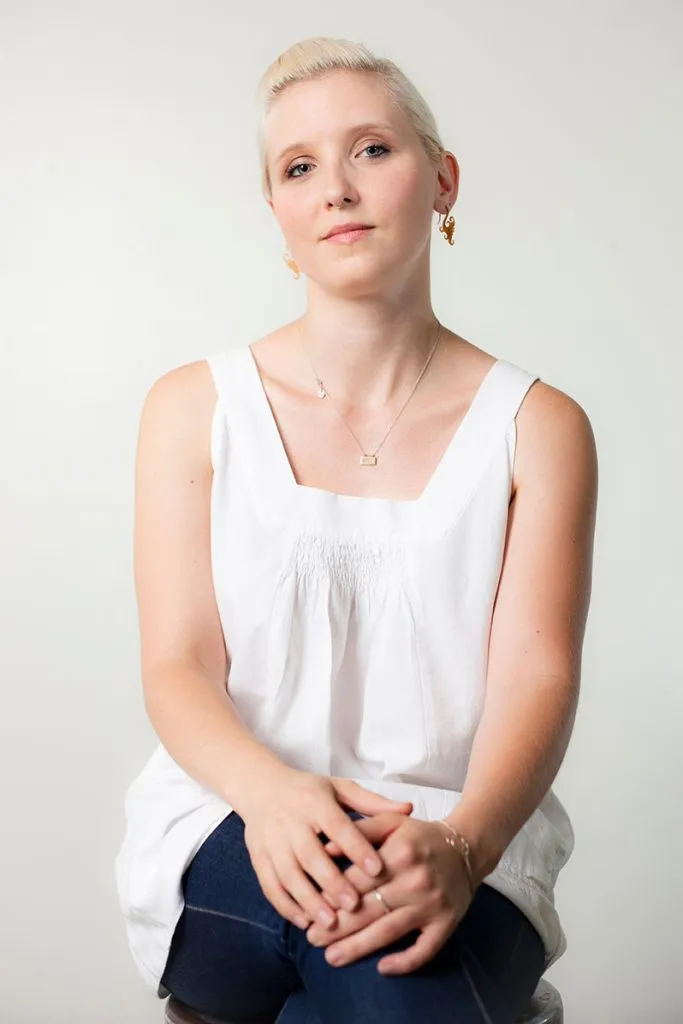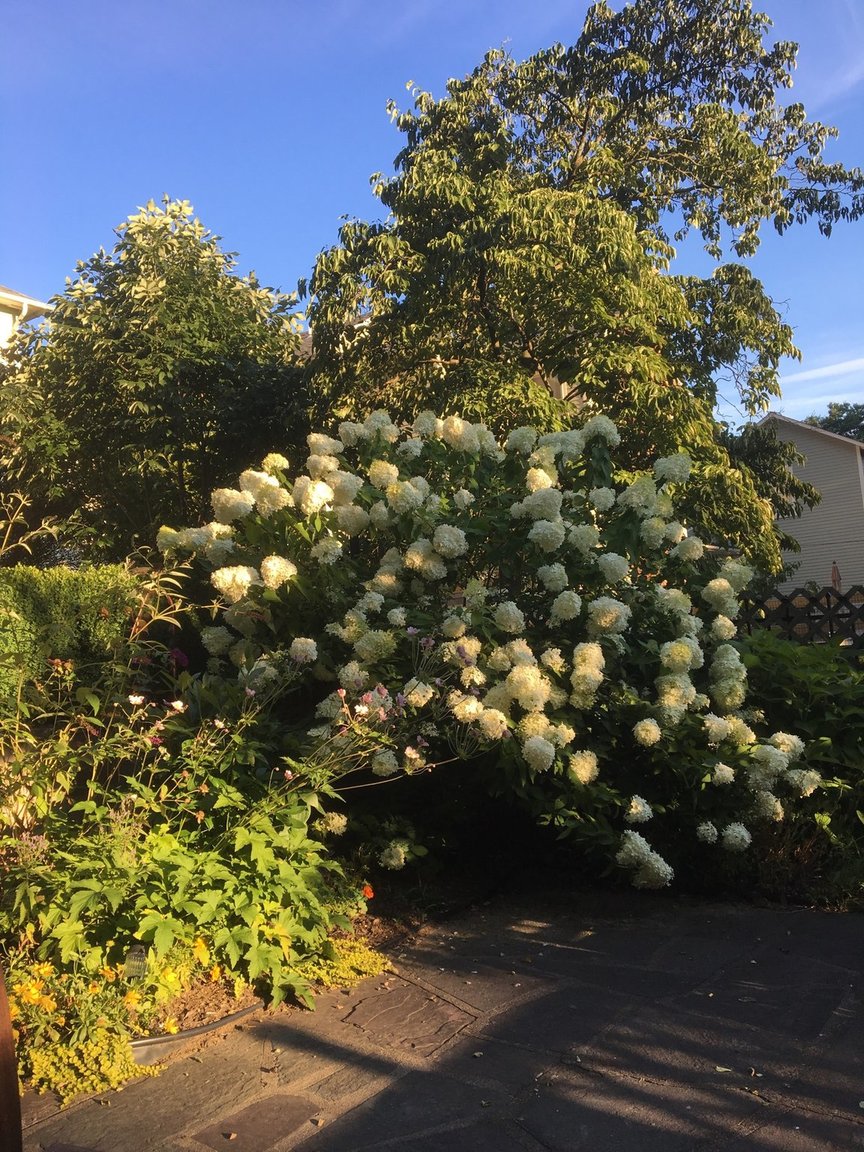Meet the Staff: An interview with Laure Biron

The Mural Arts staff is made up of bold, creative, visionary individuals, and we think you should get to know them! Scroll down to meet Laure Biron, the director of Mural Arts’ Porch Light program.
Emily: Let’s start with a bit of background—are you from Philadelphia? What was your road to Mural Arts like?
Laure: I’m from Fort Washington, but I moved away for college. When it came time to apply for art schools I moved back to Philadelphia to go to PAFA for my MFA. While I was there, there was a muralist who was also attending the MFA program who told me about an opening in the Art Education department here, and I began as an assistant in Art Ed. I’ve been a lead instructor and an administrator, and have worked in Restorative Justice, Art Ed, and Special Projects. I’ve had a meandering path within the organization but I’ve worked here for 8 years so when people ask me questions about the larger organization, I’m uniquely poised to be able to speak as an insider about our work.
Emily: From my understanding, Porch Light has gone through an evolution since it began. How have you seen the program grow and change?
Laure: Porch Light was originally a multi-year initiative being studied by the Yale University Medical School. Once that study period ended, the Department of Behavioral Health and Intellectual Disability Services continued to fund us. I came approximately a year after that happened and at the time we were primarily funded by DBHIDS, and we hadn’t really diversified our funds. We had lost some mural walls due to development issues, and different scenarios had occurred that held up some of the projects. When I came on board, we completed all the old work and prepared ourselves to have two new provider sites. This year we got funds for Southeast by Southeast to do an artist residency program, so we’re able to do bigger and better things as we start to diversify our funding and really establish ourselves as a department.
Emily: What are the directions you would love to see Porch Light go in?
Laure: While our programming looks different and our outputs look different and our core focus looks different in each of our departments, I’d like to see us work cross-departmentally even more than we already do. I’d like to see opportunities to overlap in big ways with some of the sites, populations, and issues they’re engaging, focused through the lens of mental health. I feel like the future of our departments is to try to find these ways in which the issues that we’re each encountering in our populations are similar and can be addressed.
Emily: There’s a strong connection between creating something such as art and mental health and fulfillment. How do you see this displayed around Porch Light?
Laure: The way this plays out in the mental health field, or at least the way DBHIDS talks about it, is this triangle. The bottom of the triangle has the most people, that’s the general population. These are people who may or may not in their lives need behavioral health services, though certainly they’ll know someone who may need health services at some point. The middle of the triangle are people who will definitely engage or be forced to engage in some behavioral health service. Then there’s the much smaller part of the population, people who are already engaged in some behavioral health service. Porch Light engages all the parts of that triangle. I’ve seen it at our provider sites with individuals who move from understanding themselves as addicts to understanding themselves as artists. I think it becomes a part of their mental health and coping strategies to not only identify as an artist but to make art. I think it provides a way of dealing with trauma, thinking through what they believe to be true about the world and themselves in a really flexible way that’s different from a lot of the modalities of short term therapy where it’s much less flexible—you work the steps, or this is what you’re supposed to be doing in this space and this is what you’re not supposed to be doing. It gives this freeform space, and also improves other types of coping strategies like social skills and creative problem solving. I get calls every week from people who are clinicians or social workers around the city who have a client that really likes art and they think that could be accompaniment to their treatment and they want to get them into our program. I think we bring a lot of discussion about these really tough subjects to people who otherwise may not be talking about this stuff.
Emily: How does it feel to see all of the positive effects on people’s wellness?
Laure: It’s amazing. I’m also a private practice psychotherapist. So for me, this is the other side of the work I needed to be doing. I have a masters in social service as a clinician and I also have a masters in legal and social policy. I’m always looking for that great combination of where can I have these really authentic and intensive, in-depth relationships with people where I can see movement. The way I experience it here is in those individual conversations still but it starts to build, where I’ve talked to hundreds of people who have been involved in Porch Light one way or another, who have been affected by this work. That’s what keeps me here, even though I may work a 14-16 hour day being here and then at my private practice. I have this great opportunity to go in-depth and then this becomes my opportunity for a different kind of depth, and then for that breadth, which I think as an artist and a mental health practitioner, what a sweet spot to be at. The graduation speaker at my college, I think her whole pitch to us is that you can have it all, and I think this is an example of having it all. I feel really lucky.
Emily: What is your world like outside of Mural Arts?
Laure: Well it’s very much centered around my private practice, and the two feel for me inextricably linked, because they’re both about mental health. I treat mostly artists, although not exclusively. That’s a big part of my life outside of here. I often talk about my private practice as my artistic practice because it’s still about solving problems in the confines of a medium. If I was to say what kind of creative thing I’m into now I would say it’s my garden. We lived in Mt. Airy for a while and I had a very small garden and I outgrew it very quickly, so we moved so I’d have lots of space. Every year that’s my project. I have the next three years plotted out for different spots that are just mulch right now, but will be a garden bed in a few years. I have two beds—there’s a butterfly bush, Echinacea, a couple rose bushes, an aster that took over a big part of the bed, and an anemone is coming up right now, it’s really full. It’s a nice contrast from being in the city all day and then being able to go out to my country and have that private backyard filled with gardens.
Emily: Thanks so much, Laure!


